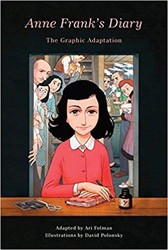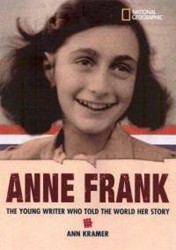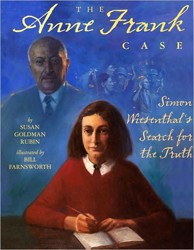Girl for the Ages
The familiar and poignant story, told in sophisticated images and an information-packed lay out, make this unusual graphic biography appealing to teens as well as adults. Lauren Kramer reviewed Anne Frank: The Anne Frank House Authorized Graphic Biography for the children’s section of Jewish Book World.
There’s something riveting about reading comic strips. The images thrust you immediately into the story without the intensity of concentration demanded by regular literature. When it comes to Anne Frank’s graphic biography, authorized by the Anne Frank House and created by Sid Jacobson and Ernie Colón, that immediacy feels at once frighteningly close and warmly familiar. As Jewish readers we already know so much about Anne’s life by way of her diary, which revealed the honesty of her voice and her frustration as an incarcerated teen longing for freedom. But Jacobson and Colón have created this absorbing new graphic biography that brings new light and a fresh perspective to her story and the story of her family and their helpers. The creators’ consistently realistic diagrams capture pain and hope on the faces of their characters, while their sketches of the Annex and the city around it give the scene an eerie familiarity. The authors contrast the occurrences inside the Annex with snapshots of what was going on in the outside world. They use numbers and figures to give readers a sense of how bleak the future looked for Jews.
Their material is fastidiously researched through the archives at the Anne Frank House in Amsterdam, the Anne Frank Fund in Basel, and historical data and photos from other authorities. The novel is neatly arranged into chapters to help delineate its focal points.
The graphic biography is a fascinating read for readers of all ages, but the authors were reaching in particular to young people aged 14 to 18. “Our mission is to make the life story of Anne Frank accessible to as large an audience as possible,” the authors write. “Young people in particular enjoy reading graphic novels (as a preference to ‘normal’ books.) Now that the generation that experienced World War II and the Shoah in person slowly fades, it is important to find new ways of keeping this period alive with the younger generations.”
This is an important resource in the school classroom, too, and a helpful aid to teaching children about the historical context in which Anne’s diary was written. “Our hope,” write the authors, “is that the biography encourages its readers to think about the meaning Anne Frank had in history, and it would be great if they then would feel tempted to read her actual diary.”
While other versions of Anne Frank’s diary focus on her voice, Jacobson and Colón give room and color to her father, Otto, describing the type of man he was and the level of respect he engendered from those around him. Most of us don’t know, for example, that Otto responded personally to many of the thousands of letters he received from young readers after the first publication of his daughter’s diary. Rather than be consumed by misery and pain, he wrote “I hope Anne’s book will have an effect on the rest of your life so that, insofar as it is possible in your own circumstances, you will work for unity and peace.”
We all know the fate Anne Frank and most of her family members met, and yet that doesn’t stop the reader from wishing fervently, all the way through this biography, that things might have turned out so differently were it not for a single betrayal. At one point in his life Otto Frank tried to find out who betrayed his family, but was unable to get any answers. In his old age, he decided he didn’t want to know anymore. “I cannot forgive, but I don’t want retaliation, I want reconciliation,” he reflected.
Given the enormity of his loss, these words take on new significance and by the time the reader closes the book, there is a sense of relief and hope, albeit one tinged with sadness.
Lauren Kramer is a Vancouver-based journalist.




